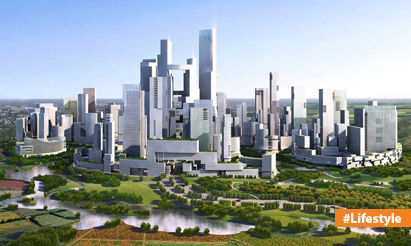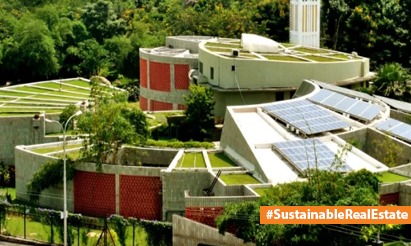Should Builders Use Natural Materials to Construct Homes?
Building techniques that are environmentally friendly and sustainable have gained popularity recently. Using natural resources to construct homes is one strategy that is gaining popularity. Natural materials, such as wood, bamboo, straw, and clay, have several advantages in terms of their influence on the environment, their health, and their ability to conserve energy. Investigating the use of natural materials in buildings is essential as the world struggles with the problems posed by climate change and the need for sustainable development.
Natural construction materials have a less carbon impact than conventional building materials, which is one compelling reason why developers are turning to them. For example, wood is a renewable resource that absorbs carbon dioxide as it grows. Compared to building with steel or concrete, using lumber may dramatically cut greenhouse gas emissions. Natural materials also frequently demand less energy during the production process, significantly lowering a building’s carbon footprint.
Additionally, natural materials provide healthier living conditions and better indoor air quality. Numerous traditional building materials have volatile organic compounds (VOCs), which can emit dangerous pollutants into the air and have a severe effect on occupant health. On the other hand, natural materials are non-toxic and improve the quality of indoor air. For instance, rammed earth or adobe, which are clay-based materials, may control humidity levels and absorb pollutants, improving the general comfort and well-being of people.
The superior thermal performance of natural materials is another benefit. For example, wood and straw have inherent insulating qualities that improve thermal comfort and lessen the need for excessive heating or cooling. For homes, this may lead to energy savings and lower utility expenses. Natural materials can also control moisture levels, reducing problems like mold growth and enhancing the overall lifetime of buildings.
The use of natural materials encourages biophilic design principles and a connection to nature. A warm and inviting ambiance may be created by using components like exposed timber beams, natural stone, or clay walls, which improves a home’s overall visual appeal. These organic materials and textures offer a timeless appeal that may foster harmony with the surroundings.
When employing natural materials, it is crucial to take into account their shortcomings and practical considerations. Local laws, sourcing options, and availability are important considerations. Developers are responsible for ensuring a sustainable and ethical supply chain for natural resources, taking into account things like deforestation or environmental effect. To preserve the building’s lifetime, proper upkeep and defense against pests and deterioration should be taken into account.
In conclusion, using natural materials in construction has a number of advantages that are consistent with sustainable and environmentally friendly building techniques. The benefits include a reduced carbon footprint, higher thermal performance, better indoor air quality, and a connection to nature. Developers should carefully analyze the viability and potential of using natural materials in their construction projects, notwithstanding any potential practical hurdles. By embracing these materials, the building industry can help build resilient and sustainable houses that benefit both the environment and its residents.
Disclaimer: The views expressed above are for informational purposes only based on industry reports and related news stories. PropertyPistol does not guarantee the accuracy, completeness, or reliability of the information and shall not be held responsible for any action taken based on the published information.





Your blog is a breath of fresh air! In a sea of mundane content, yours stands out with its unique perspective and authentic voice. It’s always a pleasure to read what you have to say.